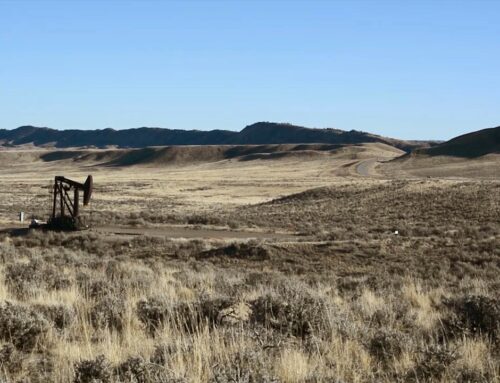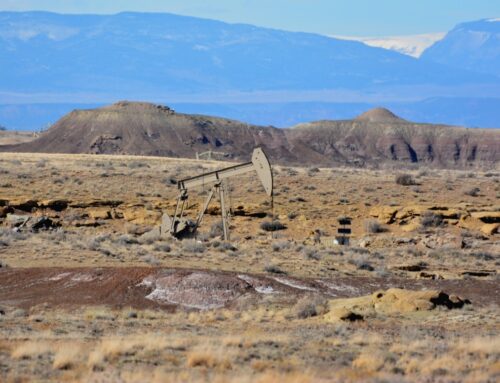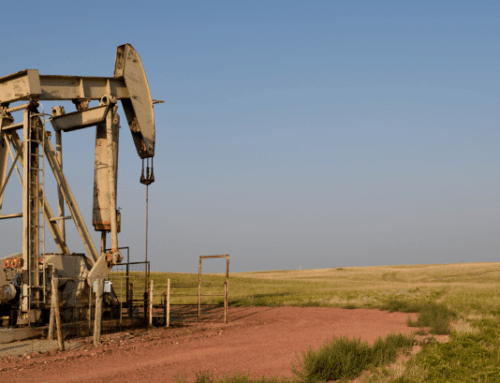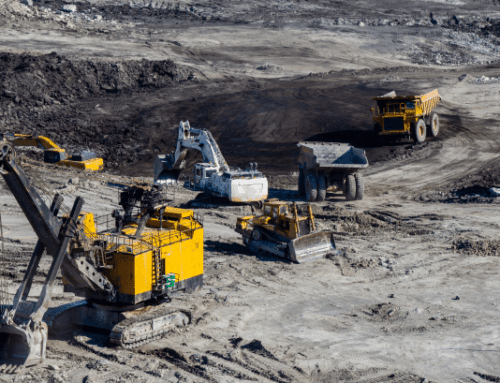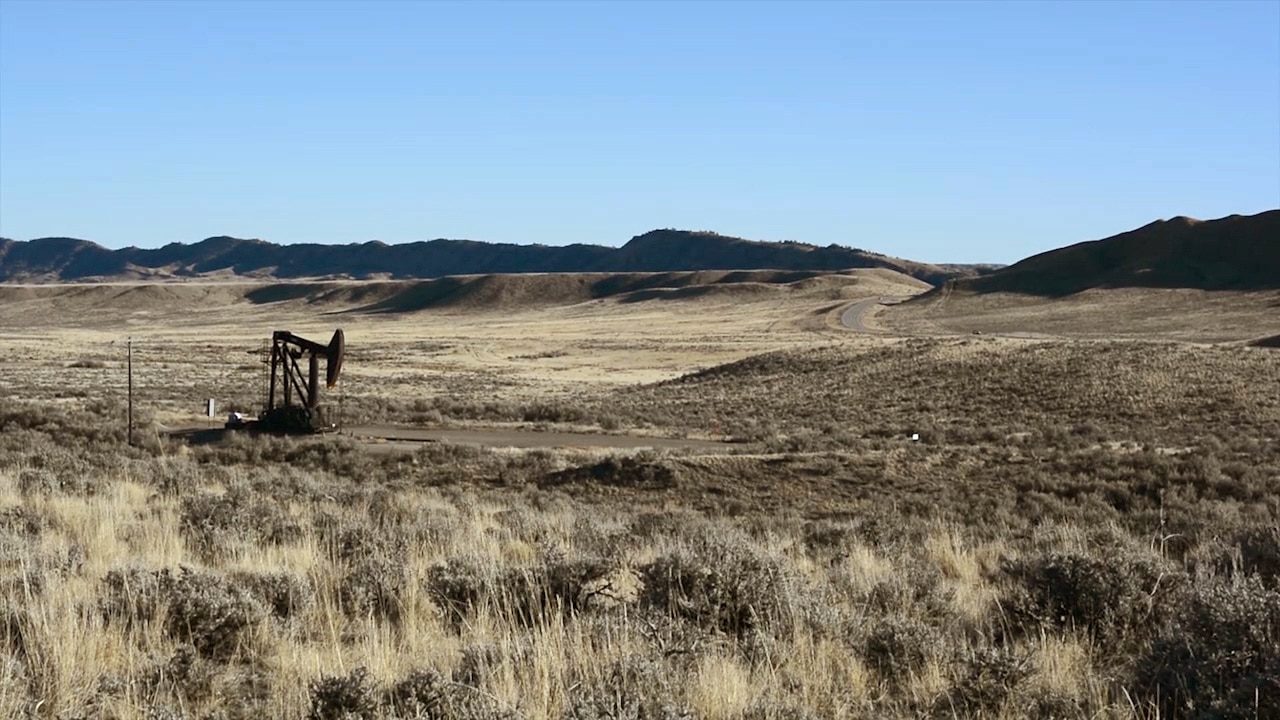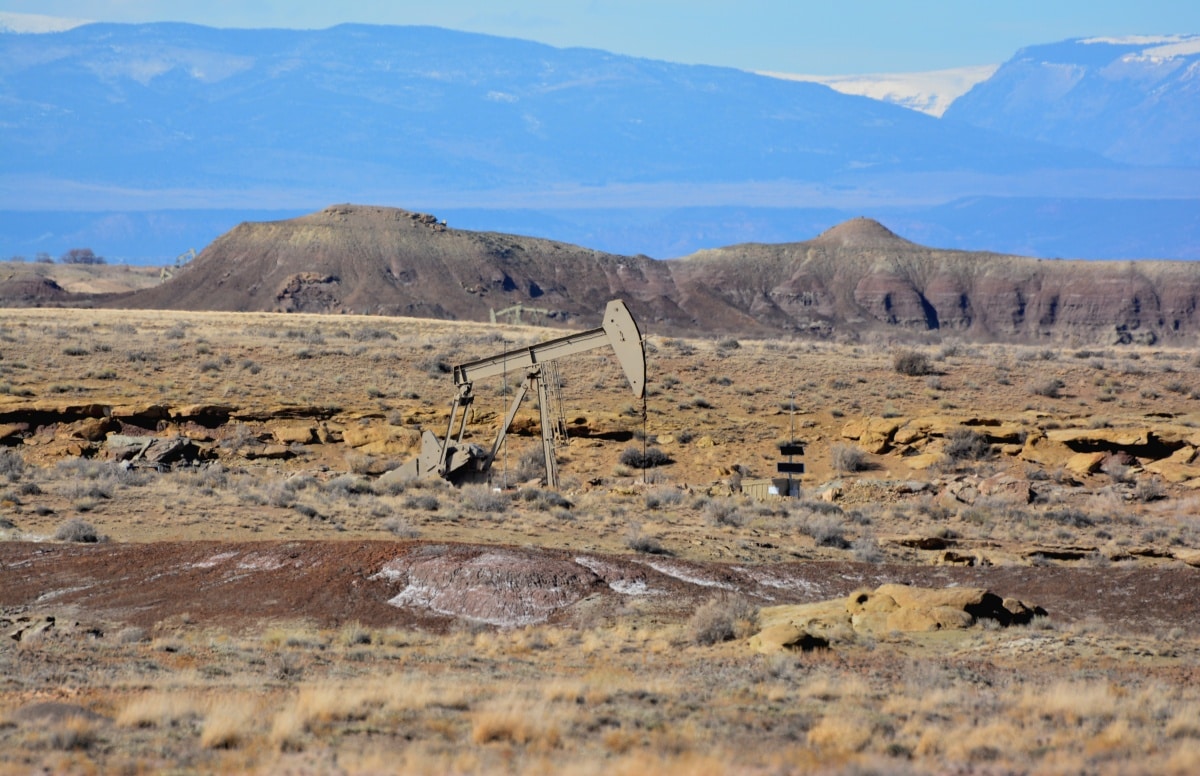President Joe Biden’s landmark climate law could help the fossil fuel industry pump more oil out of existing wells.
A boosted tax credit for enhanced oil recovery, or EOR, aims to encourage oil companies to store more planet-warming carbon underground. But knowing how much carbon dioxide is sequestered in EOR is far from a firm science — and a lack of cohesive federal oversight of the so-called 45Q tax credit has created the potential for abuse.
“There’s a lot of money from the [Inflation Reduction Act], and a lot of concerns that taxpayer money is going out the door to industry that hasn’t proven EOR to be an efficient climate solution,” said Autumn Hanna, vice president of Taxpayers for Common Sense.
The Treasury Department is expected to soon publish its final rules for the increased tax break, which could unleash a boom in EOR, a process in which oil producers force CO2 underground to bring up more crude. The method can increase a well’s oil production by as much as 50 percent.
The incentive is part of the Biden administration’s efforts to tackle climate change and reach a net-zero emissions economy by 2050. Oil companies will be able to claim between $60 and $130 per metric ton of CO2 sequestered using EOR by 2026, compared to a maximum of $26 per metric ton in 2023.
Oil executives have already signaled they plan to supercharge their EOR portfolios.
JX Nippon Oil & Gas Exploration restarted Petra Nova — the country’s first and only power plant to capture carbon — partly because the new tax credits made the project more economically sound. Exxon subsidiary XTO Energy got permission last month from North Dakota officials to begin an EOR pilot project.
Vicki Hollub, CEO of Occidental Petroleum, said she expects her company to produce 12,000 barrels a day with EOR in the Permian Basin by 2026.
“To leave 30 to 40 percent of oil in conventional reservoirs and 90 percent of oil in shale reservoirs is just not acceptable,” Hollub said in an earnings call this year, referring to how much oil typically remains in wells without the use of enhanced oil recovery. “For the U.S. to continue our energy independence, EOR is going to have to be part of the equation, ultimately.”
The IRS requires operators who claim the 45Q tax credit to self-report both how much CO2 they inject and how much leaks out. To verify that info, the agency turns to data those companies reported to EPA — data that EPA says was never created or accumulated to help determine taxes.
Critics say there is little collaboration between the agencies, thanks in part to the confidential nature of tax returns. They assert that the IRS — or really any federal agency — is ill-equipped to chart the web of CO2 shipments and uses that are soon to unfold nationwide.
“You have the IRS looking around saying, ‘How are we going to verify this, we don’t have technical people on the ground verifying this.’ The EPA has [monitoring, review and verification] plans, but those plans were never intended to be used for tax purposes,” said Paul Blackburn, an attorney and energy policy adviser with the oil industry watchdog nonprofit Bold Alliance. “There’s a regulatory gap and lack of oversight in what could be a multibillion-dollar source of revenue for the government.”
And then there are the environmental concerns.
EPA has raised questions in the past about the environmental consequences if incentives for EOR switched from pumping out crude to more permanently storing CO2.
“If the business model for [enhanced recovery] changes to focus on maximizing CO2 injection volumes and permanent storage, then the risk of endangerment to [underground sources of drinking water] is likely to increase,” the agency noted in a 2010 Federal Register filing about federal CO2 underground storage requirements.
Environmental groups have also criticized tax credits for EOR as a subsidy for the oil industry, and a way to continue to encourage the production and use of fossil fuels. Preet Bains, a research analyst for the Environmental Integrity Project, said using CO2 for oil production undermines the goal of carbon sequestration — to reduce the amount of planet-warming CO2 in the atmosphere.
She said under the current regulatory regime, it’s hard to know exactly how much CO2 is being stored and how much is ending up in the atmosphere.
“It’s important to know how much CO2 is being released by the oil that gets burned or extracted through EOR,” Bains said. “If the purpose of 45Q tax credits is to encourage carbon sequestration, it’s pretty important to know how much CO2 we’re talking about.”
Industry officials, however, say enhanced oil recovery has already produced oil with lower emissions profiles and has the potential to make more strides in reducing emissions associated with the entire life cycle of a barrel of oil.
“You can conceivably have EOR produce oil that is CO2 emissions neutral or negative,” said Pete Obermueller, president of the Petroleum Association of Wyoming. “The idea that it perpetuates more emissions doesn’t stand up to scrutiny. A lot of these critics just don’t want companies to produce oil, period.”
Flooding the fields
Operators began flooding oil fields with pressurized CO2 in the 1970s, starting in West Texas, said Hugh Daigle, an associate professor of petroleum engineering with the University of Texas at Austin.
Before that, oil producers were limited to using the natural pressure of oil reservoirs or pumps to extract oil. Those processes left a lot behind.
“I mean, general rule of thumb, we’re lucky to get 30 percent of the oil, give or take, out of the reservoir,” said Fred McLaughlin, director of the University of Wyoming’s Center for Economic Geology Research. “So there were efforts back then to figure out how to boost production in existing oil reservoirs.”
McLaughlin said companies began to flood wells with water and other chemicals. While that helped bring more oil to the surface, much remained underground.
Enter CO2.
“It’s more efficient at pushing the oil out [than water],” Daigle said. “For one, it reduces the viscosity of the oil and makes it easier to push it out. It makes the oil swell and increases in volume — if you have oil trapped in some nook or cranny, if you cause it to swell, suddenly it may dislodge itself.”
To start an EOR project, operators drill an injection well to begin pumping down the CO2, pushing the oil toward producer wells. The oil binds to the CO2 when it emerges from the producer wells, and then the two are separated chemically. The same CO2 is forced back underground over and over again, bringing up more oil each go around.
Some of the CO2 stays underground after its first flood, requiring producers to buy more to replace it. By the end of an EOR well’s life, very little oil and very little CO2 comes back out, leading companies to eventually shut the well in, and ideally, sequester the CO2.
Lon Whitman, director of the Enhanced Oil Recovery Institute (EORI) based in Casper, Wyoming, said that operators in the past never thought about the CO2 they were storing, except that it created another expense.
“They were aware because they had to continue to purchase more CO2” to flood the fields, Whitman said. “From Day 1, part of the carbon dioxide each cycle was being kept underground. Then with the desire to clean the environment, or to look at gases that are potentially causing problems, the storage discussion began — I think the oil business was years ahead because they had already been doing that.”
But the primary goal of EOR, until recently, was to eke out more oil and bring dying oil fields back into production.
At one unit of the Patrick Draw oil field in southwest Wyoming, for example, EOR caused production to rise from 10 barrels a day to more than 7,000 barrels a day within the span of a few months, according to EORI. The institute says EOR now accounts for 6 percent of oil production in Wyoming.
Some lawmakers in Wyoming are trying to raise that number.
Earlier this year, state lawmakers proposed a stimulus fund that would give companies an additional $10 for every ton of CO2 they used for EOR instead of permanent sequestration. That would be on top of the $60 per ton companies could get for EOR under the federal 45Q tax credit.
That bill ultimately died, but the goal was to bridge the gap between the tax credit for EOR and for permanent sequestration, said Obermueller with the Petroleum Association of Wyoming. The Inflation Reduction Act provides a larger tax break for companies that permanently sequester carbon.
Obermueller said the oil and gas industry accounted for 40 percent of all property taxes paid statewide in 2022 — totaling nearly $880 million — and the state could miss out on additional revenue that would come with extra oil recovered through EOR. Captured CO2 that is injected for permanent sequestration, without being used first for EOR, wouldn’t help the state bring in more tax money, he argued.
“We often talk about how Wyoming’s economy is a three-legged stool: energy, agriculture and tourism. The [gross domestic product] from oil and gas is more than twice agriculture and tourism combined,” Obermueller said. “It doesn’t matter what other industry comes to or operates in Wyoming, economic activity in the state does not happen without resource extraction.”
Whitman with EORI said state revenues from EOR was $270 million in just severance taxes in 2020.
But the federal government is still reckoning with how to calculate how much CO2 is sequestered, or used, in EOR — and how much leaks back out into the atmosphere.
Confidential data
To receive the 45Q tax credit, companies are required to show how much CO2 their EOR projects keep underground, and how much leaks. There are two ways they can do that: By self-reporting to EPA or by hiring a third-party engineer to report and verify their numbers directly to the IRS.
Only 13 facilities self-reported to EPA’s Greenhouse Gas Reporting Program for sequestration via EOR in 2022, the most recent year data is available. The IRS declined to say how many companies or facilities received 45Q tax credits in 2022, due to confidentiality laws that protect tax returns.
Blackburn with Bold Alliance said Congress has not required the IRS to provide any sort of an overview of 45Q reports. That means the agency doesn’t even release consolidated data, he said, which would not include individual company or facility names.
“All tax credit information is considered confidential, so that means even if the EPA wanted to try to work with the data the IRS has on the tax credit claims, it couldn’t because Congress hasn’t authorized EPA to get tax credit claims for this purpose,” he said.
The IRS uses data from EPA’s Greenhouse Gas Reporting Program to verify how much it should award in tax credits. But EPA says the program — along with the monitoring, review and verification plans that companies fill out as part of it — was never intended to be used for tax purposes.
“While both [EPA reporting for EOR] and the 45Q tax credit program relate to carbon sequestration, they were developed and are implemented independently by separate federal agencies. The EPA does not implement the Section 45Q tax credit program and is not privy to taxpayer data,” reads the EPA website, which directs users to the IRS for any questions on the program.
The IRS declined to answer questions or make anyone available for an interview for this story.
A 2020 investigation, however, found that the companies claiming the largest 45Q tax credits often don’t fulfill reporting requirements.
The Treasury Department’s inspector general for tax administration — acting on a request from former Sen. Bob Menendez (D-N.J.) — examined 45Q tax credits the IRS awarded from 2010 through 2019. Auditors found that 87 percent of the tax credits awarded to the 10 largest claimants — or nearly $894 million — were not in compliance with EPA.
In other words, the claimants did not have approved monitoring, review and verification plans in place, as required to claim the tax credit.
POLITICO’s E&E News asked the IRS and the Treasury Department whether any changes had been made since the 2020 report to prevent that type of lapse from reoccurring. Neither agency responded to that question.
Hanna with Taxpayers for Common Sense said there are several issues at play: Companies are self-certifying what they sequester without EPA verification on-site, EPA and the IRS lack the staff to track the reporting and qualifications for tax credits, and a lack of communication between the two agencies can lead to inaccurate findings.
“There’s not interagency coordination,” she said. “Again, we have these questions on the quality of data even when completed, but even in the past, we’ve seen the IRS distribute these tax credits without those [EPA] forms being completed.”
Many companies that use EOR don’t report to EPA, as such reporting is only required to take advantage of the 45Q tax credit, Whitman with EORI said. And only 57 companies voluntarily submit data under a separate EPA program that is unrelated to the tax credit.
Few state agencies require EOR projects to report data on their CO2 usage.
That leaves a lack of data about the amount of CO2 injected underground, and the amount potentially leaking, from EOR wells across the country.
“Who is really watching what they’re doing?” asked Blackburn. “A company could simply say 50 percent of [reported CO2] went to sequestration, when in reality only 25 percent went to sequestration. How could anybody prove that they did that?”
- Canva Pro

